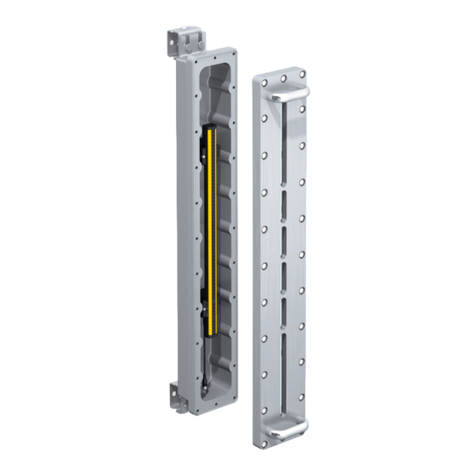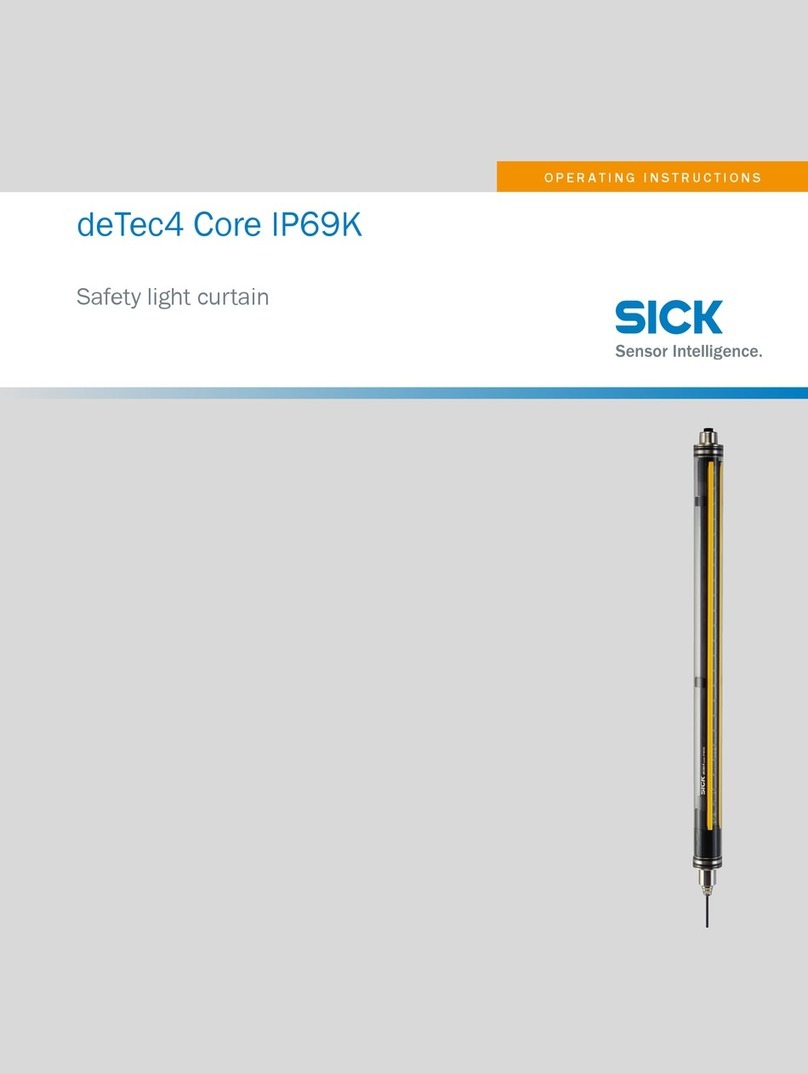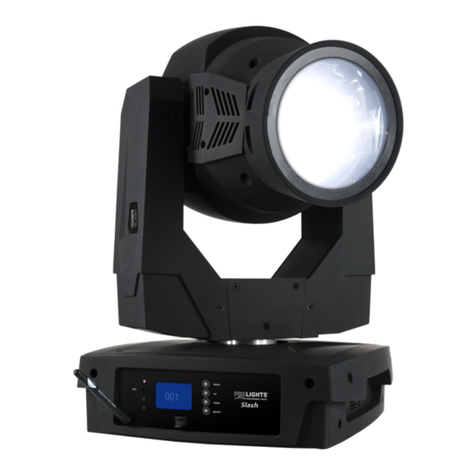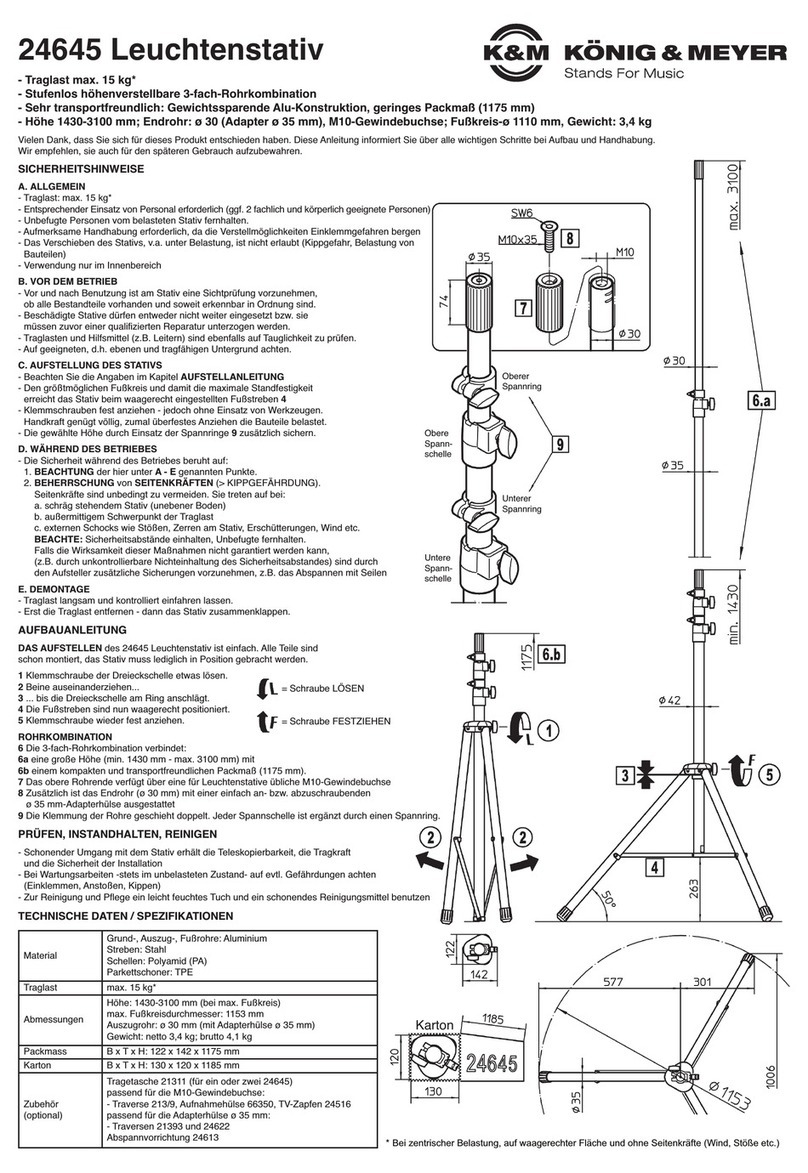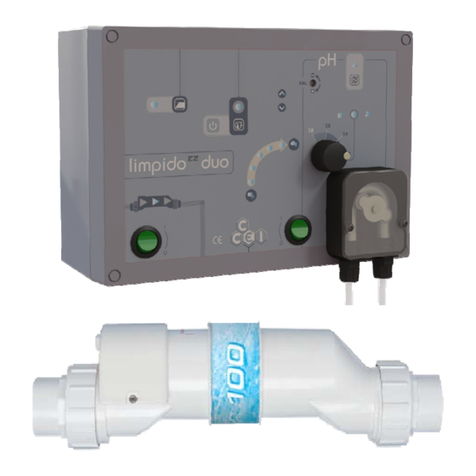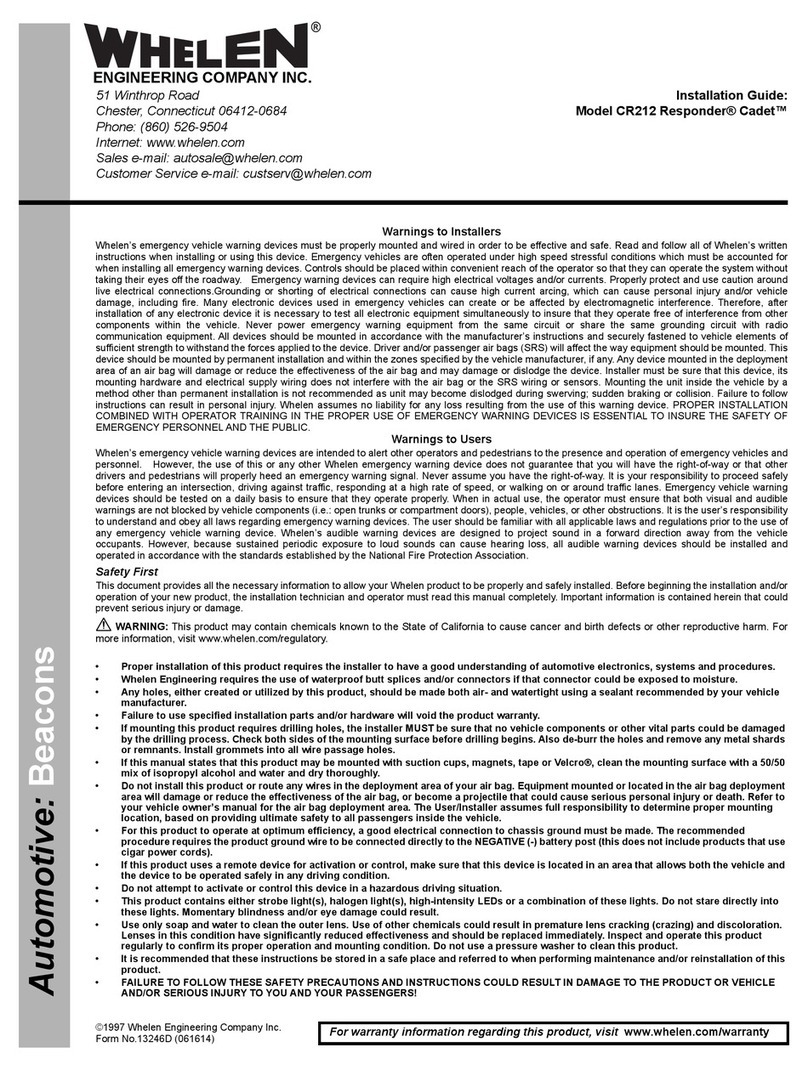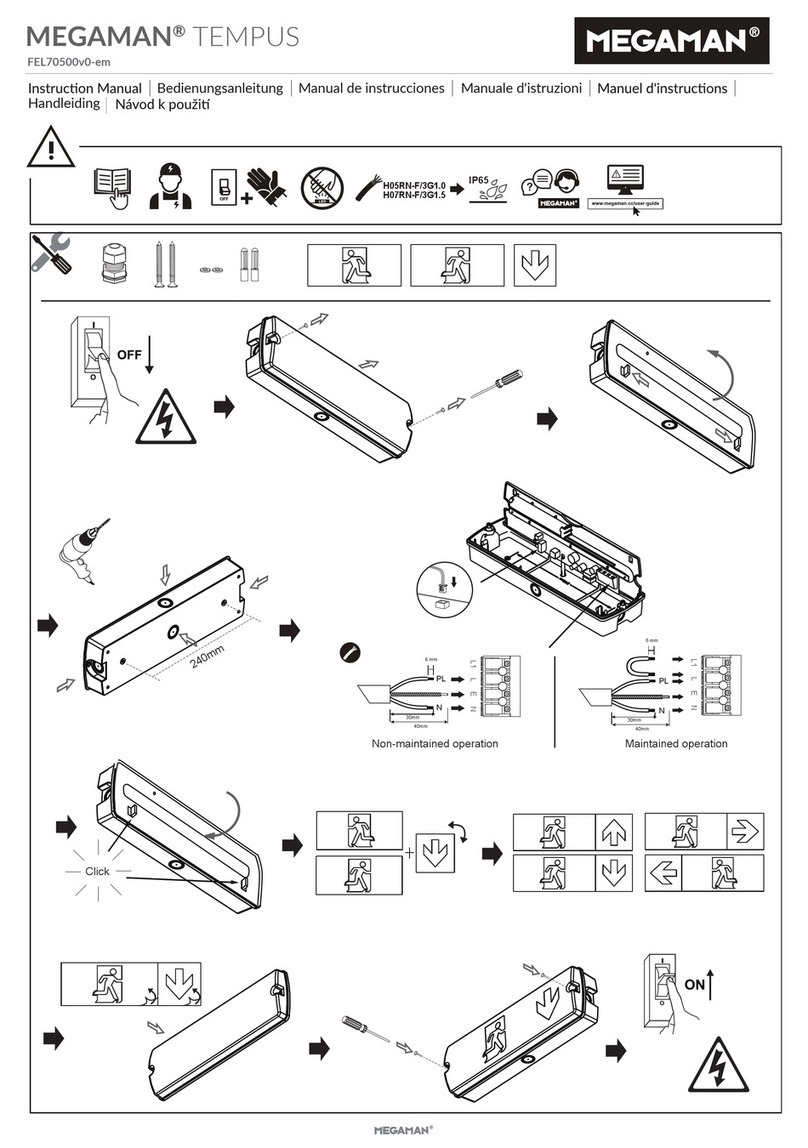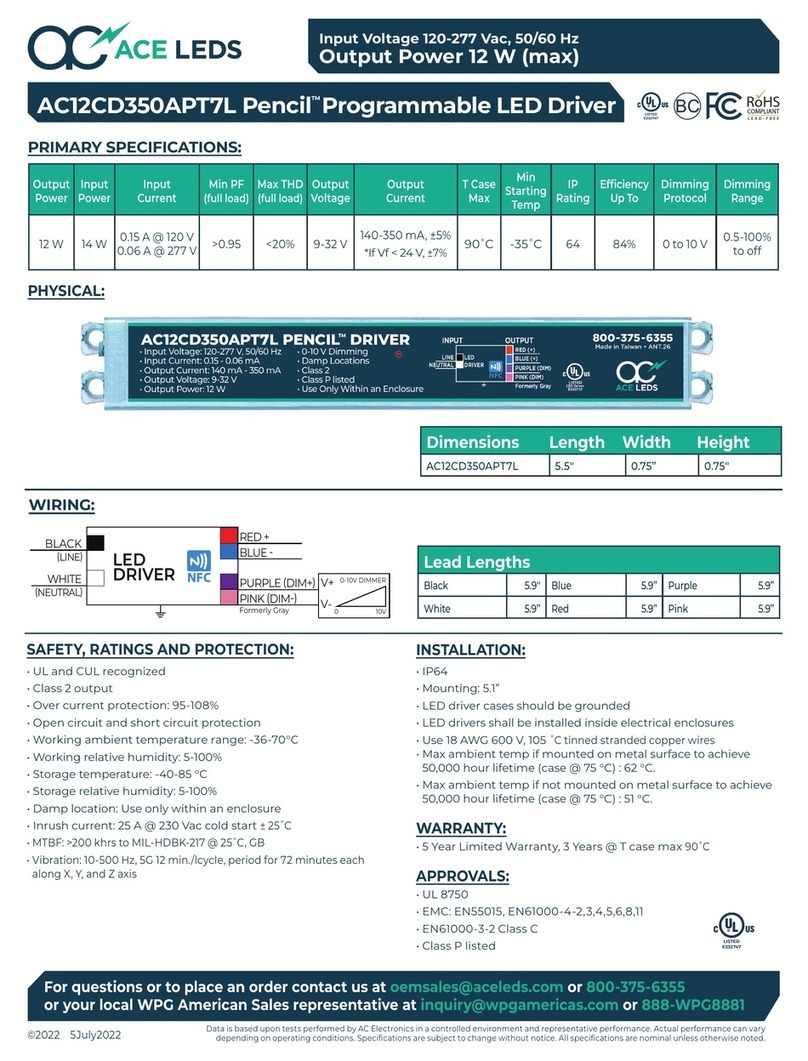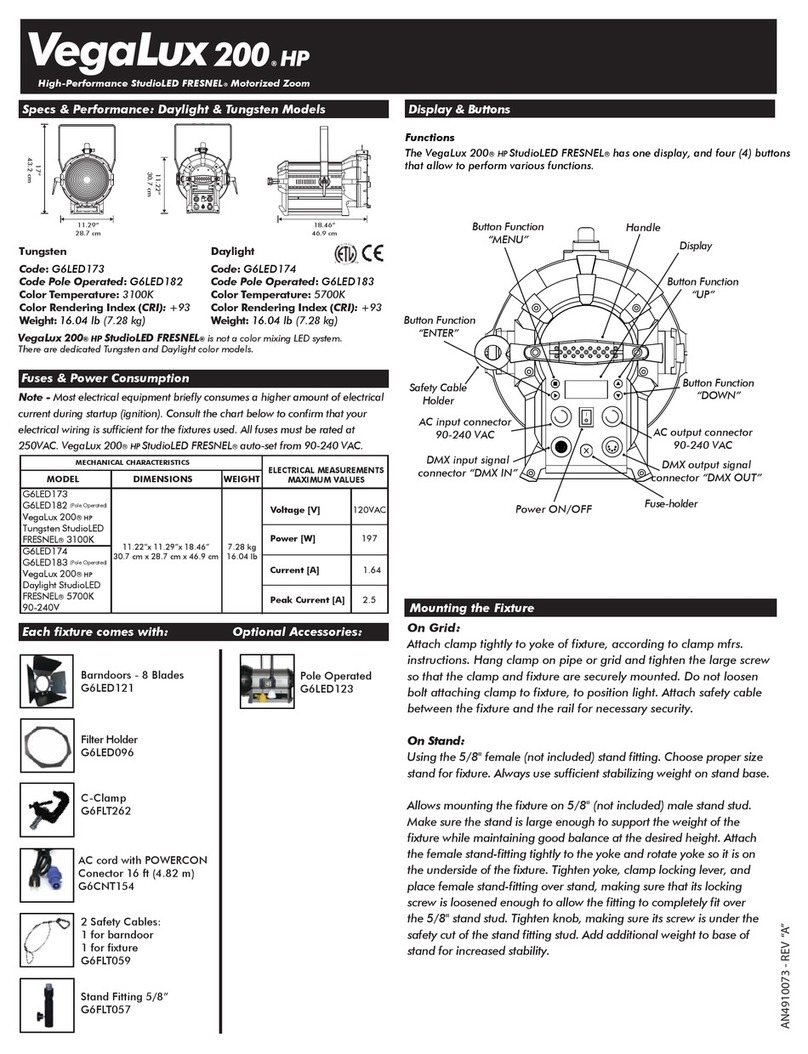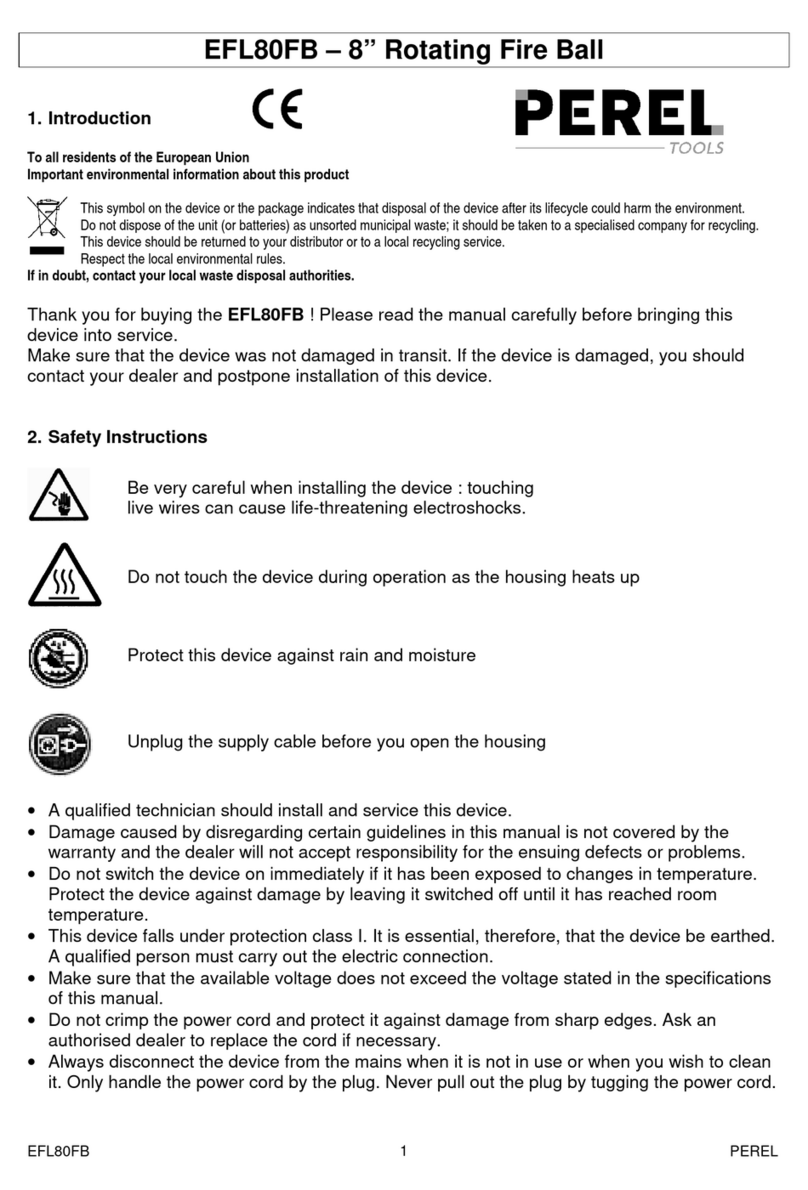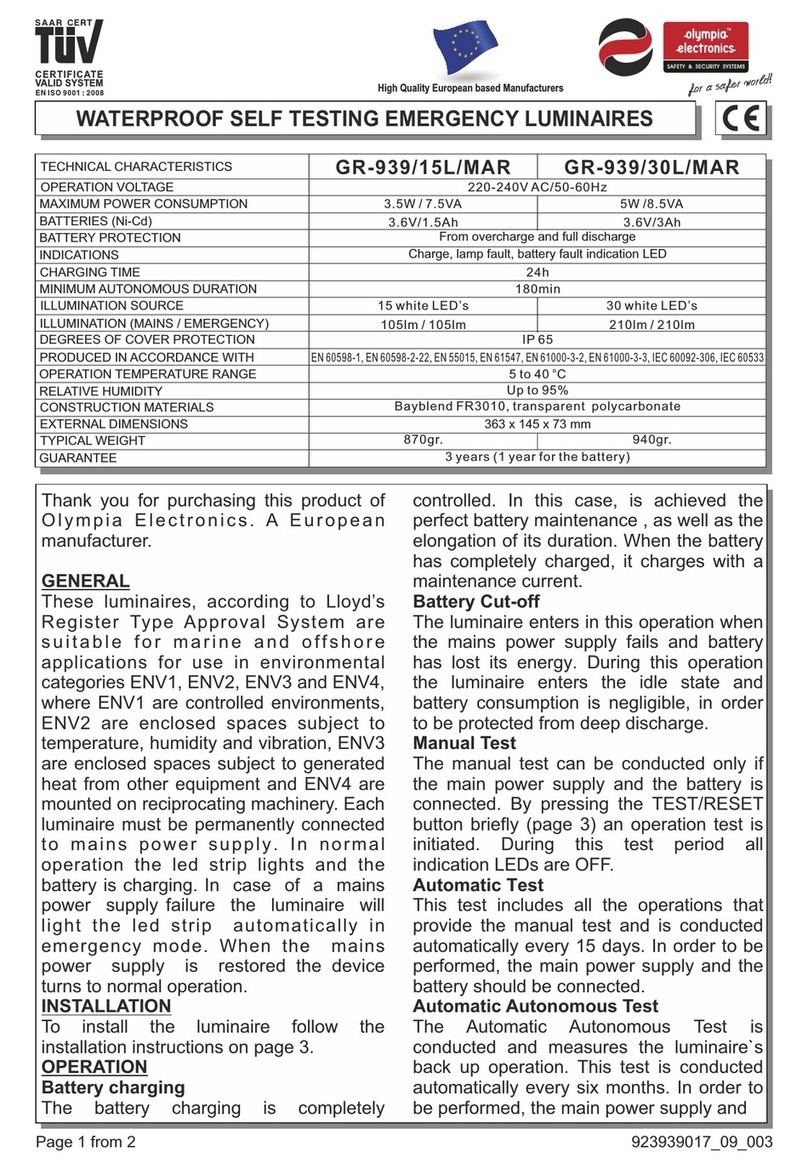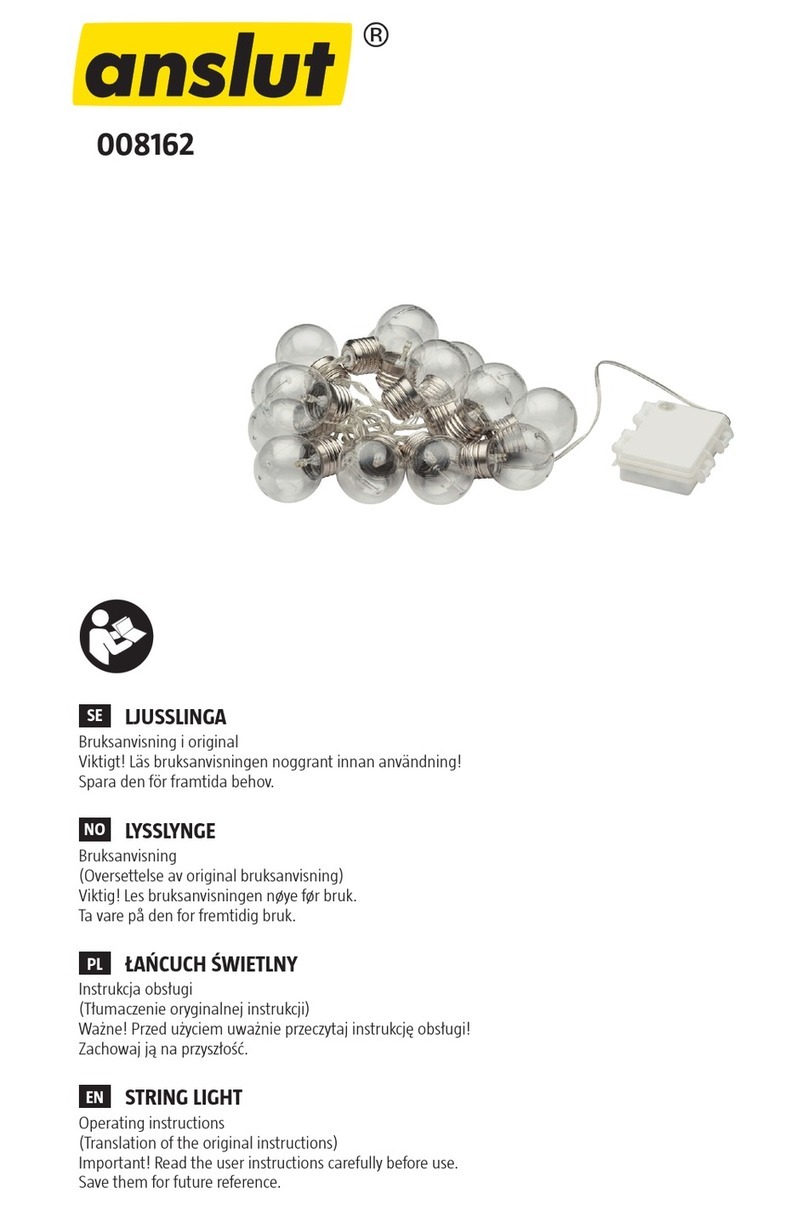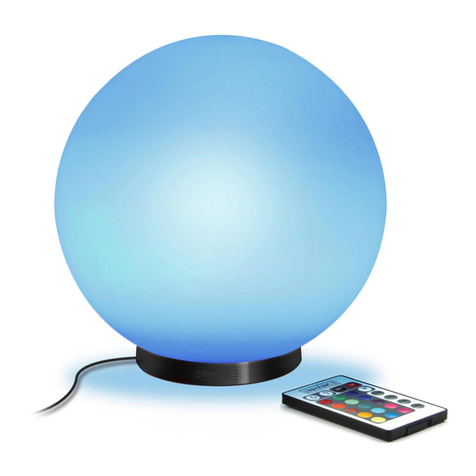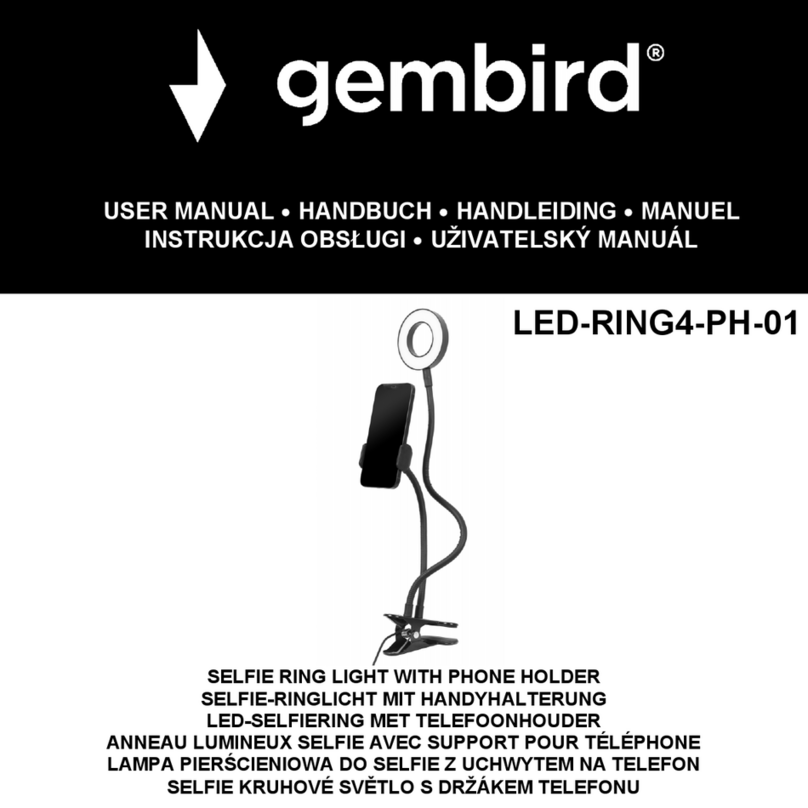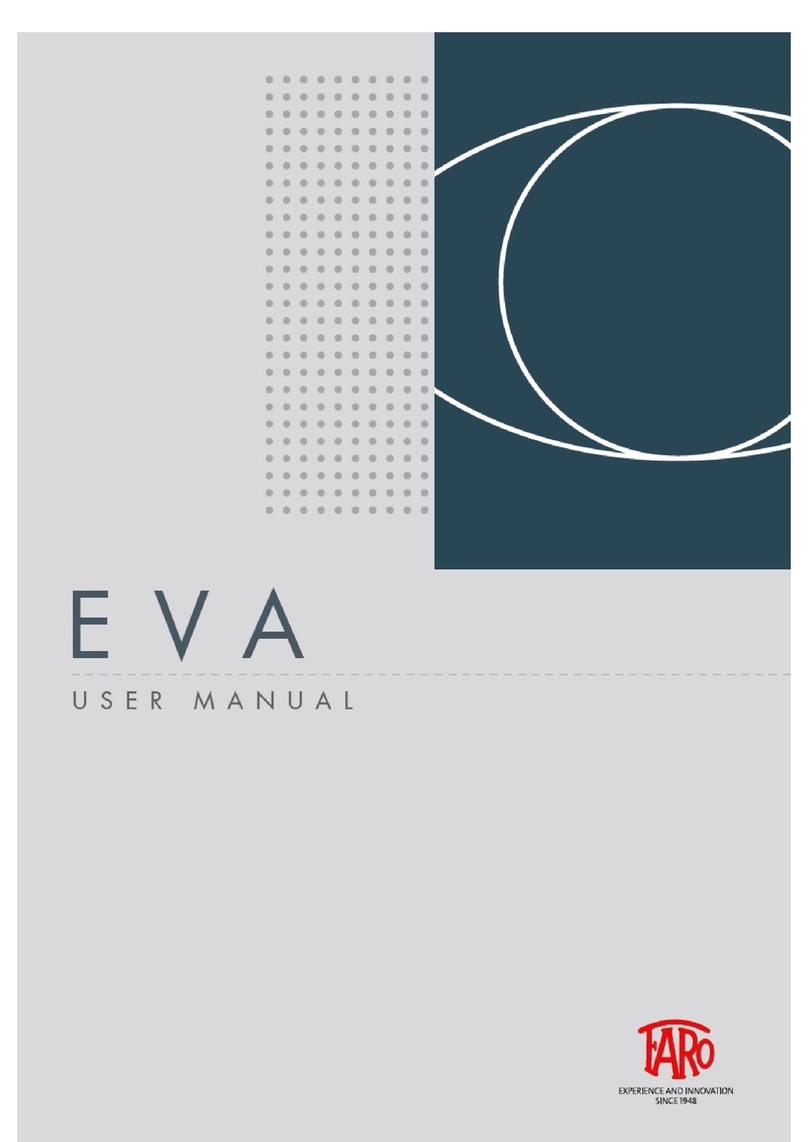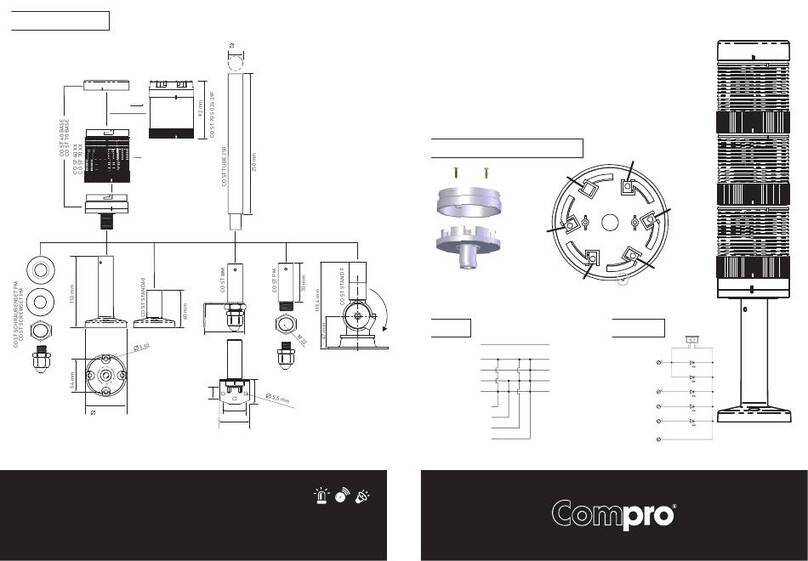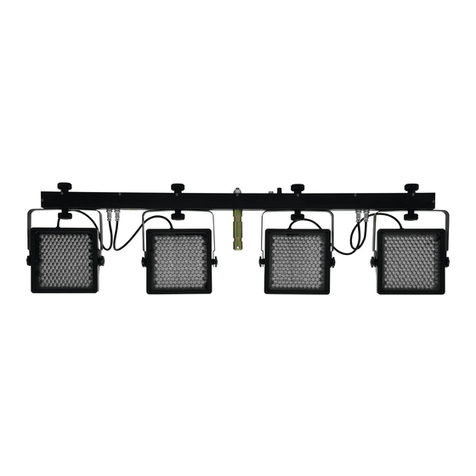SICK deTec4 Core User manual

OPERATING INSTRUCTIONS
deTec4 Ex II 3GD
Safety light curtain

Described product
deTec4 Ex II 3GD
Manufacturer
SICK AG
Erwin-Sick-Str. 1
79183 Waldkirch
Germany
Legal information
This work is protected by copyright. Any rights derived from the copyright shall be
reserved for SICK AG. Reproduction of this document or parts of this document is
only permissible within the limits of the legal determination of Copyright Law. Any modi‐
fication, abridgment or translation of this document is prohibited without the express
written permission of SICK AG.
The trademarks stated in this document are the property of their respective owner.
© SICK AG. All rights reserved.
Original document
This document is an original document of SICK AG.
2O P E R A T I N G I N S T R U C T I O N S | deTec4 Ex II 3GD 8023872/18YZ/2021-01-14 | SICK
Subject to change without notice

Contents
1 About this document........................................................................ 7
1.1 Purpose of this document........................................................................ 7
1.2 Scope......................................................................................................... 7
1.3 Target groups of these operating instructions........................................ 7
1.4 Additional information.............................................................................. 7
1.5 Symbols and document conventions...................................................... 8
2 Safety information............................................................................ 9
2.1 General safety notes................................................................................ 9
2.2 Correct use................................................................................................ 10
2.3 Inappropriate use..................................................................................... 11
2.4 Requirements for the qualification of personnel.................................... 11
3 Product description........................................................................... 12
3.1 Structure and function............................................................................. 12
3.2 Product characteristics............................................................................ 13
3.2.1 Device overview....................................................................... 13
3.2.2 Absence of blind zones........................................................... 13
3.2.3 Automatic calibration of the protective field width................ 13
3.2.4 Dynamic protective field width................................................ 14
3.2.5 Beam coding............................................................................ 14
3.2.6 Reduced resolution................................................................. 14
3.2.7 Alignment aid........................................................................... 14
3.2.8 Restart interlock...................................................................... 14
3.2.9 External device monitoring (EDM).......................................... 15
3.2.10 Application diagnostic output................................................. 15
3.2.11 Cascading................................................................................. 15
3.2.12 Smart presence detection....................................................... 15
3.2.13 Muting....................................................................................... 16
3.2.14 Partial blanking........................................................................ 16
3.2.15 IO-Link...................................................................................... 16
3.2.16 Near Field Communication (NFC)........................................... 16
3.2.17 System plug.............................................................................. 17
3.2.18 Flexible control cabinet cabling and status indication on
both sides................................................................................. 20
3.2.19 Status indicators...................................................................... 21
3.3 Example applications............................................................................... 24
4 Project planning................................................................................ 26
4.1 Manufacturer of the machine.................................................................. 26
4.2 Operator of the machine.......................................................................... 26
4.3 Design........................................................................................................ 26
4.3.1 Scanning range and protective field width............................. 27
4.3.2 Minimum distance from the hazardous point....................... 28
CONTENTS
8023872/18YZ/2021-01-14 | SICK O P E R A T I N G I N S T R U C T I O N S | deTec4 Ex II 3GD 3
Subject to change without notice

4.3.3 Minimum distance to reflective surfaces............................... 30
4.3.4 Protection against interference from systems in close prox‐
imity to each other................................................................... 33
4.3.5 Reduced resolution................................................................. 37
4.3.6 Muting....................................................................................... 38
4.4 Integration in electrical control................................................................ 46
4.4.1 Restart interlock...................................................................... 48
4.4.2 External device monitoring (EDM).......................................... 49
4.4.3 Application diagnostic output................................................. 50
4.4.4 Muting lamp............................................................................. 51
4.4.5 Connection of sender and receiver........................................ 51
4.4.6 Laser alignment aid................................................................. 51
4.4.7 Cascading................................................................................. 53
4.4.8 Smart presence detection....................................................... 55
4.4.9 IO-Link...................................................................................... 55
4.4.10 Muting....................................................................................... 55
4.4.11 Connection diagrams.............................................................. 56
4.5 Testing plan............................................................................................... 62
4.5.1 Test rod check.......................................................................... 63
4.5.2 Visual check of the machine and the protective device........ 65
5 Mounting............................................................................................. 66
5.1 Safety......................................................................................................... 66
5.2 Unpacking.................................................................................................. 66
5.3 Mounting the system plug........................................................................ 67
5.4 Installation................................................................................................ 68
5.4.1 Mounting the QuickFix bracket............................................... 71
5.4.2 Mounting the FlexFix bracket.................................................. 72
5.4.3 Mounting the upgrade bracket............................................... 76
5.5 Affixing labels............................................................................................ 76
6 Electrical installation........................................................................ 78
6.1 Safety......................................................................................................... 78
6.2 System connection (M12, 5-pin)............................................................. 80
6.3 System connection (M12, 8-pin)............................................................. 80
6.4 Extension connection (M12, 5-pin)......................................................... 82
7 Configuration..................................................................................... 84
7.1 Overview.................................................................................................... 84
7.2 Factory settings......................................................................................... 86
7.2.1 Reset to factory settings......................................................... 86
7.3 Configuration mode.................................................................................. 88
7.4 Configuring beam coding......................................................................... 88
7.5 Configuring muting................................................................................... 89
7.6 Configuring the scanning range............................................................... 91
7.7 Configuring reduced resolution............................................................... 92
CONTENTS
4O P E R A T I N G I N S T R U C T I O N S | deTec4 Ex II 3GD 8023872/18YZ/2021-01-14 | SICK
Subject to change without notice

7.8 Configuring smart presence detection.................................................... 93
7.9 Checking the parity................................................................................... 94
7.10 Configuring the restart interlock.............................................................. 95
7.11 Configuring external device monitoring (EDM)....................................... 96
7.12 Configuring application diagnostic output.............................................. 97
7.13 Configuring cascading.............................................................................. 98
7.13.1 Cascading new devices........................................................... 99
7.13.2 Connecting a new device in an existing cascade.................. 99
7.13.3 Connecting preconfigured devices in an existing cascade... 100
7.14 Status indication on both sides............................................................... 100
8 Commissioning.................................................................................. 101
8.1 Safety......................................................................................................... 101
8.2 Overview.................................................................................................... 102
8.3 Switching on.............................................................................................. 102
8.4 Sender and receiver alignment................................................................ 103
8.4.1 Aligning the sender and receiver............................................ 103
8.4.2 Alignment with the QuickFix bracket...................................... 105
8.4.3 Alignment with the FlexFix bracket or with the upgrade
bracket...................................................................................... 105
8.4.4 Indication of the alignment quality......................................... 106
8.5 Check during commissioning and modifications.................................... 107
9 Operation............................................................................................ 108
9.1 Overview.................................................................................................... 108
9.2 Safety......................................................................................................... 108
9.3 Regular thorough check........................................................................... 109
9.4 LEDs........................................................................................................... 109
10 Maintenance...................................................................................... 112
10.1 Safety......................................................................................................... 112
10.2 Regular cleaning....................................................................................... 112
10.3 Regular thorough check........................................................................... 113
11 Troubleshooting................................................................................. 114
11.1 Overview.................................................................................................... 114
11.2 Safety......................................................................................................... 114
11.3 Diagnostic LEDs........................................................................................ 115
11.3.1 Indications when switching on................................................ 115
11.3.2 Status indication...................................................................... 117
11.3.3 Fault indicators........................................................................ 120
12 Decommissioning............................................................................. 126
12.1 Disposal..................................................................................................... 126
13 Technical data.................................................................................... 127
13.1 Data sheet................................................................................................. 127
CONTENTS
8023872/18YZ/2021-01-14 | SICK O P E R A T I N G I N S T R U C T I O N S | deTec4 Ex II 3GD 5
Subject to change without notice

13.2 Response time.......................................................................................... 131
13.3 Power consumption.................................................................................. 132
13.4 Length of cable......................................................................................... 132
13.5 Table of weights........................................................................................ 134
13.6 Dimensional drawings.............................................................................. 135
14 Ordering information........................................................................ 137
14.1 Scope of delivery....................................................................................... 137
14.2 Ordering information................................................................................. 137
15 Accessories........................................................................................ 139
15.1 Brackets.................................................................................................... 139
15.2 Mounting accessories.............................................................................. 140
15.3 Connectors................................................................................................ 140
15.4 Alignment aid............................................................................................ 144
15.5 Deflector mirrors....................................................................................... 144
15.5.1 Function and use..................................................................... 144
15.5.2 Mounting.................................................................................. 145
15.5.3 Change in scanning range using deflector mirrors................ 145
15.5.4 Deflector mirror PNS75 - ordering information...................... 146
15.5.5 Deflector mirror PNS125 - ordering information................... 146
15.6 Mirror columns.......................................................................................... 146
15.7 Device columns......................................................................................... 147
15.8 Cleaning agent.......................................................................................... 147
15.9 Test rods.................................................................................................... 147
15.10 Muting accessories................................................................................... 148
15.11 Additional accessories............................................................................. 148
16 Annex.................................................................................................. 149
16.1 Compliance with EU directives................................................................. 149
16.2 Note on standards.................................................................................... 150
16.3 Checklist for initial commissioning and commissioning........................ 151
17 List of figures..................................................................................... 152
18 List of tables....................................................................................... 154
CONTENTS
6O P E R A T I N G I N S T R U C T I O N S | deTec4 Ex II 3GD 8023872/18YZ/2021-01-14 | SICK
Subject to change without notice

1 About this document
1.1 Purpose of this document
These operating instructions contain information required during the life cycle of the
safety light curtain.
These operating instructions are available to all those who work with the safety light
curtain.
Please read these operating instructions carefully and make sure that you understand
the content fully before working with the safety light curtain.
1.2 Scope
These operating instructions only apply to the deTec4 Ex II 3GD safety light curtain with
one of the following type label entries in the “Operating Instructions” field:
•8023870
This document is included with the following SICK part numbers (this document in all
available language versions):
8023870
1.3 Target groups of these operating instructions
Some chapters of these operating instructions are intended for certain target groups.
However, the entire operating instructions are relevant for intended use of the product.
Table 1: Target groups and selected chapters of these operating instructions
Target group Chapters of these operating instructions
Project developers (planners, developers,
designers)
"Project planning", page 26
"Configuration", page 84
"Technical data", page 127
"Accessories", page 139
Installers "Mounting", page 66
Electricians "Electrical installation", page 78
Safety experts (such as CE authorized repre‐
sentatives, compliance officers, people who
test and approve the application)
"Project planning", page 26
"Configuration", page 84
"Commissioning", page 101
"Technical data", page 127
"Checklist for initial commissioning and com‐
missioning", page 151
Operators "Operation", page 108
"Troubleshooting", page 114
Maintenance personnel "Maintenance", page 112
"Troubleshooting", page 114
1.4 Additional information
www.sick.com
The following information is available on the Internet:
•This document in other languages
•Data sheets and application examples
•CAD data and dimensional drawings
ABOUT THIS DOCUMENT 1
8023872/18YZ/2021-01-14 | SICK O P E R A T I N G I N S T R U C T I O N S | deTec4 Ex II 3GD 7
Subject to change without notice

•Certificates (e.g. EU declaration of conformity)
•Guide for Safe Machinery Six steps to a safe machine
1.5 Symbols and document conventions
The following symbols and conventions are used in this document:
Safety notes and other notes
DANGER
Indicates a situation presenting imminent danger, which will lead to death or serious
injuries if not prevented.
WARNING
Indicates a situation presenting possible danger, which may lead to death or serious
injuries if not prevented.
CAUTION
Indicates a situation presenting possible danger, which may lead to moderate or minor
injuries if not prevented.
NOTICE
Indicates a situation presenting possible danger, which may lead to property damage if
not prevented.
NOTE
Indicates useful tips and recommendations.
Instructions to action
bThe arrow denotes instructions to action.
1. The sequence of instructions for action is numbered.
2. Follow the order in which the numbered instructions are given.
✓The check mark denotes the result of an instruction.
LED symbols
These symbols indicate the status of an LED:
oThe LED is off.
ÖThe LED is flashing.
OThe LED is illuminated continuously.
Sender and receiver
These symbols indicate the sender and receiver of the device:
sThe symbol indicates the sender.
rThe symbol indicates the receiver.
1 ABOUT THIS DOCUMENT
8O P E R A T I N G I N S T R U C T I O N S | deTec4 Ex II 3GD 8023872/18YZ/2021-01-14 | SICK
Subject to change without notice

2 Safety information
2.1 General safety notes
DANGER
If the safety component is integrated incorrectly, the dangerous state may be ended to
late.
bPlan the integration of the safety component in accordance with the machine
requirements, see "Project planning", page 26.
CAUTION
Laser class 1
LASER
1
Figure 1: Laser class 1
This device has been classified in accordance with the following standards:
•IEC 60825-1:2007/EN 60825-1:2007
•IEC 60825-1:2014/EN 60825-1:2014
•21 CFR 1040.10 and 1040.11, except for deviations pursuant to Laser Notice
No. 50 dated 2007-06-24
The laser is eye-safe. Looking directly into the laser may cause temporary impairments.
The outlet opening of the laser radiation is located in the sender, see figure 5,
page 21. The laser is only active when the laser alignment aid is switched on.
Laser identification is located on the rear of the sender.
bComply with the latest version of the applicable provisions on laser protection.
CAUTION
If any operating or adjusting devices other than those specified in this document are
used or other methods are employed, this can lead to dangerous exposure to radiation.
bOnly use the operating or adjusting devices specified in this document.
bOnly follow the methods specified in this document.
bDo not open the housing, except for the purposes of the installation and mainte‐
nance work specified in these operating instructions.
SAFETY INFORMATION 2
8023872/18YZ/2021-01-14 | SICK O P E R A T I N G I N S T R U C T I O N S | deTec4 Ex II 3GD 9
Subject to change without notice

WARNING
Risk of ineffectiveness of the protective device
Please observe the following information to ensure safe and correct use of the device.
bSpecial national and international regulations and guidelines apply for the mount‐
ing, use, commissioning, and regular technical inspection of electrical devices
in explosion-hazardous areas, in particular ATEX Directive 2014/34/EU and the
IECEx scheme. Manufacturers of and entities operating machines using the safety
light curtain are responsible for ensuring that all applicable safety regulations and
guidelines are complied with.
bThese operating instructions must be made available to the operator of the
machine on which the device is used. Qualified safety personnel must instruct
the operator on how to use the device. The operator must also be directed to read
and follow the operating instructions.
DANGER
Risk of ignition
Failure to observe this instruction can result in a risk of ignition from potential sparking.
bEnsure that only accessories that are approved for explosion-hazardous areas are
used, e.g., an NFC-capable mobile device or muting lamp, see "Project planning",
page 26.
NOTICE
UV radiation can reduce the service life and resistance of the front screen. When used
in an explosion proof area, the front screen may not be exposed to any UV radiation
(e.g., sunlight).
bSelect a mounting position in which the front screen is not exposed to UV radia‐
tion.
NOTICE
Mechanical loads
The device passes the impact test required by the applicable standards.
Plastic device components must not be subjected to mechanical loads greater than
4 joules.
Transparent parts (front screen) must not be subjected to mechanical loads greater
than 2 joules.
2.2 Correct use
The deTec4 Ex II 3GD safety light curtain is an electro-sensitive protective device (ESPE)
and is suitable for the following applications:
•Hazardous point protection
•Access protection
•Hazardous area protection
The deTec4 Ex II 3GD safety light curtain must only be used within the limits of the
prescribed and specified technical data and operating conditions at all times.
Any instance of improper use, incorrect modification, or manipulation of the deTec4 Ex
II 3GD safety light curtain shall void any warranty provided by SICK AG; furthermore,
SICK AG shall not accept any responsibility or liability for any resulting damage and
consequential damage.
2 SAFETY INFORMATION
10 O P E R A T I N G I N S T R U C T I O N S | deTec4 Ex II 3GD 8023872/18YZ/2021-01-14 | SICK
Subject to change without notice

2.3 Inappropriate use
The safety light curtain works as an indirect protective measure and cannot provide
protection from parts thrown out nor from emitted radiation. Transparent objects are
not detected.
Among others, the deTec4 Ex II 3GD safety light curtain is not suitable for the follow‐
ing applications:
•Outdoors
•Underwater
•At altitudes over 3,000 m above sea level
•In environments with increased levels of ionizing radiation
2.4 Requirements for the qualification of personnel
The safety light curtain must be planned in, installed, connected, commissioned and
serviced only by qualified safety personnel.
Project planning
For project planning, a person is considered competent when he/she has expertise and
experience in the selection and use of protective devices on machines and is familiar
with the relevant technical rules and national work safety regulations.
Mechanical mounting
For mechanical mounting, a person is considered competent when he/she has the
expertise and experience in the relevant field and is sufficiently familiar with the appli‐
cation of the protective device on the machine that he/she can assess its operational
safety status.
Electrical installation
For electrical installation, a person is considered competent when he/she has the
expertise and experience in the relevant field and is sufficiently familiar with the appli‐
cation of the protective device on the machine that he/she can assess its operational
safety status.
Configuration
For configuration, a person is considered competent when he/she has the expertise
and experience in the relevant field and is sufficiently familiar with the application of
the protective device on the machine that he/she can assess its work safety aspects.
Commissioning
For commissioning, a person is considered competent when he/she has the expertise
and experience in the relevant field and is sufficiently familiar with the application of
the protective device on the machine that he/she can assess its operational safety
status.
Operation and maintenance
For operation and maintenance, a person is considered competent when he/she has
the expertise and experience in the relevant field and is sufficiently familiar with the
application of the protective device on the machine and has been instructed by the
machine operator in its operation.
SAFETY INFORMATION 2
8023872/18YZ/2021-01-14 | SICK O P E R A T I N G I N S T R U C T I O N S | deTec4 Ex II 3GD 11
Subject to change without notice

3 Product description
3.1 Structure and function
Overview
The deTec4 Ex II 3GD safety light curtain is an electro-sensitive protective device (ESPE)
consisting of a sender and receiver.
A series of parallel infrared light beams forms a protective field between sender and
receiver that protects the hazardous area (hazardous point, access, and hazardous
area protection). When one or more beams are completely interrupted, the safety light
curtain reports the interruption in the light path to the secure output signal switching
devices (OSSDs) by a signal change. The machine or its control must safely analyze the
signals (for example using a safe control or safety relays) and stop the dangerous state.
Sender and receiver automatically synchronize themselves optically. An electrical con‐
nection between both components is not required, but is advantageous.
r
s
Figure 2: Sender and receiver
Protective field height
The protective field height indicates the range within which the test rod belonging to the
safety light curtain is reliably detected.
Protective field width
The protective field width is the dimension of the light path between sender and
receiver. The maximum protective field width is limited by the scanning range.
Resolution
The resolution describes the size of the smallest object detected by the safety light
curtain in the protective field. The resolution corresponds to the diameter of the test rod
belonging to the safety light curtain.
The safety light curtain has a resolution of 14 mm. This resolution provides finger
protection.
3 PRODUCT DESCRIPTION
12 O P E R A T I N G I N S T R U C T I O N S | deTec4 Ex II 3GD 8023872/18YZ/2021-01-14 | SICK
Subject to change without notice

The safety light curtain has a resolution of 30 mm. This resolution provides hand
protection.
Scanning range
The scanning range is the maximum protective field width.
The scanning range is reduced by using deflector mirrors.
Further topics
•"Flexible control cabinet cabling and status indication on both sides", page 20
•"Data sheet", page 127
•"Deflector mirrors", page 144
3.2 Product characteristics
3.2.1 Device overview
!
§
%
"
$
Figure 3: Device overview
!Sender or receiver
"System plug
§Terminal compartment
$Extension connection (only for certain system plugs)
%System connection
3.2.2 Absence of blind zones
The design and construction of the safety light curtain extends the protective function
of a device to the end of the housing without any blind spots. The absence of blind
zones reduces the space requirement when integrated in the machine.
3.2.3 Automatic calibration of the protective field width
When switched on, the safety light curtain automatically calibrates to the protective
field width.
PRODUCT DESCRIPTION 3
8023872/18YZ/2021-01-14 | SICK O P E R A T I N G I N S T R U C T I O N S | deTec4 Ex II 3GD 13
Subject to change without notice

3.2.4 Dynamic protective field width
For a dynamic protective field width, a range is configured. Within this range, the
protective field width may change during operation.
There are 3 dynamic protective field widths to choose from for each resolution of the
safety light curtain.
Table 2: Adjustable ranges for dynamic protective field widths
Resolution Small range Medium range Large range
Minimum 1) Typical 2) Minimum 1) Typical 2) Minimum 1) Typical 2)
14 mm 0.15 m ... 4 m 0.15 m ... 5 m 1 m ... 8 m 1 m ... 10 m 2 m ... 16 m 2 m ... 20 m
30 mm 0 m ... 6 m 0 m ... 7.5 m 0 m ... 12 m 0 m ... 15 m 0 m ... 24 m 0 m ... 30 m
1) The minimum scanning range specifies a range in which a function is guaranteed to operate correctly and safely under industrial
conditions. A sufficient level of signal reserve to ensure very high availability is included in the calculation.
2) The typical scanning range specifies a range in which the safety light curtain operates correctly and safely under industrial conditions. The
level of signal reserve is enough to ensure high availability.
Further topics
•"Minimum distance to reflective surfaces", page 30
3.2.5 Beam coding.
Depending on its configuration, the safety light curtain operates with 1 of 3 beam
codings: uncoded, code 1 or code 2. The beam coding “uncoded” allows for particularly
short response times. In order to avoid mutual interference between 2 neighboring
safety light curtains, one can be operated with code 1 and the other with code 2.
3.2.6 Reduced resolution
The safety light curtain allows for one or more adjacent beams to be interrupted at
reduced resolution without the OSSDs switching to the OFF status.
As a result, smaller objects can move into the detection range of the safety light
curtain without the curtain reacting and the machine switching off. For this purpose, the
permitted resolution is reduced by up to 2 beams.
The reduced resolution can be used for suppressing interference objects, if, for
instance, cables or hoses need to be routed through the protective field. The function
can be configured during commissioning.
3.2.7 Alignment aid
A laser alignment aid is installed in the sender of the safety light curtain. The laser
alignment aid can be switched on to perform a simple alignment of the sender.
Diagnostic LEDs are installed in the receiver of the safety light curtain. For a simple
alignment of the receiver, diagnostic LEDs 1, 2, 3 and 4 indicate the alignment quality
once the safety light curtain has been switched on.
Diagnostic LEDs 5 and 6 light up if the topmost beam (far from system plug) is synchro‐
nized. Diagnostic LEDs 7 and 8 light up if the bottommost beam (near system plug) is
synchronized.
3.2.8 Restart interlock
The safety light curtain has an integrated restart interlock. The function can be config‐
ured during commissioning.
3 PRODUCT DESCRIPTION
14 O P E R A T I N G I N S T R U C T I O N S | deTec4 Ex II 3GD 8023872/18YZ/2021-01-14 | SICK
Subject to change without notice

A restart interlock prevents the machine from starting again once the protective device
has been triggered. The operator must first press a reset pushbutton to allow the
protective device to resume its monitoring function. The operator can then restart the
machine.
The reset pushbutton can be connected locally to the extension connection or in the
control cabinet.
3.2.9 External device monitoring (EDM)
The safety light curtain has integrated external device monitoring. The function can be
configured during commissioning.
The external device monitoring (EDM) monitors the status of downstream contactors.
In order to use external device monitoring, positively guided contactors must be used
to switch off the machine. If the auxiliary contacts of the positively guided contactors
are connected to the external device monitoring, the external device monitoring checks
whether the contactors switch correctly when the OSSDs are switched off.
3.2.10 Application diagnostic output
The safety light curtain has an application diagnostic output on the system connection
and on the extension connection.
Depending on the configuration, the application diagnostic output signals a certain
status of the safety light curtain, e.g. if the reset pushbutton must be engaged or if
there is a weak signal at the receiver.
For a signal of the safety light curtain to be displayed, a light can be connected to
the application diagnostic output or the signal can be transmitted to the machine
controller.
The following signals can be output over the application diagnostic output:
•Weak signal
•Reset required
•Ignored object
•Muting status
•Override required
3.2.11 Cascading
Cascading allows up to 3 safety light curtains to be connected in series, e.g. for reliable
presence detection. The device connected to the control cabinet is the host device. The
subsequent sensors are called guest 1 and guest 2.
3.2.12 Smart presence detection
Overview
The safety light curtain features smart presence detection for access and hazardous
area protection. The function can be configured during commissioning.
Principle of operation
Smart presence detection is implemented using a cascade. The guest system is only
active if the protective field of the host system has been interrupted. The OSSDs then
change to the OFF status and the machine is stopped. As long as the protective field of
the host or guest system is interrupted, machine start-up is not possible.
If all of the protective fields have been clear for at least 0.5 s, the OSSDs change back
to the ON state and the guest system returns to sleep mode.
PRODUCT DESCRIPTION 3
8023872/18YZ/2021-01-14 | SICK O P E R A T I N G I N S T R U C T I O N S | deTec4 Ex II 3GD 15
Subject to change without notice

Smart presence detection prevents an unintentional machine shut-off, for example if
chips fall into the hazardous area protected by the guest systems.
3.2.13 Muting
Muting temporarily bypasses the protection of the safety light curtain so that material
can be conveyed to or from a machine or system. As a result, the work process remains
uninterrupted. The function can be configured during commissioning.
The distinction between people and materials is made by 2 signals that are indepen‐
dent of each other. Based on the logical evaluation of these signals, the protective
device is bypassed if a valid muting condition is present. As soon as something other
than material enters the hazardous area, the work process is interrupted.
3.2.14 Partial blanking
During partial blanking, only the topmost beam of the protective field remains active if
a valid muting condition is present. All other beams are temporarily bypassed (e.g. for a
certain object height). As soon as the topmost beam is interrupted, the OSSDs switch to
the OFF status.
3.2.15 IO-Link
Overview
The safety light curtain can communicate with an IO-Link master via an IO-Link connec‐
tor, available as an accessory.
The following information can be output via IO-link:
•Application diagnostic output status information
•Device information and device status
•Configuration of the device
•Status of each individual light beam
•Error history
•Reasons for the last lockout
The following information can be controlled via IO-link:
•LED signal behavior of the field indicator
•Switching on and off of the integrated laser alignment aid
Complementary information
The safety light curtain must be supplied with voltage to enable communication with an
IO-Link master via the IO-Link connector.
Further topics
•"Accessories", page 139
3.2.16 Near Field Communication (NFC)
Overview
The receiver of the safety light curtain has an integrated NFC interface for transmitting
diagnostic data of the protective device to an NFC-capable device.
The integrated NFC interface is intended for temporary use.
3 PRODUCT DESCRIPTION
16 O P E R A T I N G I N S T R U C T I O N S | deTec4 Ex II 3GD 8023872/18YZ/2021-01-14 | SICK
Subject to change without notice

Diagnostic data
The following diagnostic data can be displayed in an NFC-capable device:
•Device-specific information of the protective device, e.g. name, serial number, type
code
•Information about the configuration, e.g. whether the restart interlock is activated
or a reduced resolution is used
•Current status of the protective device, e.g. status of the OSSDs, muting status,
quality of the alignment
•Error diagnostics with specification of the error code, error description, diagnostic
LED and error correction
An NFC-capable antenna is integrated behind the front screen of the safety light curtain
for transmitting the data. The area is marked with the NFC-symbol.
Figure 4: NFC symbol 1)
To be able to call up information for diagnostics and configuration, you need an NFC-
capable device, e.g. a smartphone and the app provided by SICK.
bHold the NFC-capable mobile device near the marked NFC-area on the lower end
of the receiver to call up the diagnostic data.
3.2.17 System plug
Overview
The following system plugs are available for the safety light curtain:
•SP1 system plug
•SP2 system plug
The system plugs differ in functional scope.
Table 3: Functional scope
Functions SP1 system plug SP2 system plug
Beam coding ✓ ✓
Restart interlock ✓ ✓
External device monitoring
(EDM)
✓ ✓
Application diagnostic output ✓ ✓
Cascade ✓ ✓
IO-Link ✓ ✓
reduced resolution – ✓
Dynamic protective field width – ✓
smart presence detection – ✓
Muting – ✓
Partial blanking – ✓
The SP1 system plug can be used on all of the senders and receivers of a single system
or on a host–guest system.
1) The N-Mark is a trademark or registered trademark of NFC Forum, Inc. in the United States and in other countries.
PRODUCT DESCRIPTION 3
8023872/18YZ/2021-01-14 | SICK O P E R A T I N G I N S T R U C T I O N S | deTec4 Ex II 3GD 17
Subject to change without notice

The SP2 system plug is only used on the receiver of a host system or single system. The
SP1 system plug is used on all other receivers of the guest systems and on all senders.
The system plugs are available in the following versions:
•System plug with 5-pin system connection
•System plug with 8-pin system connection
•System plug with 5-pin system connection and 5-pin extension connection
•System plug with 8-pin system connection and 5-pin extension connection
Prerequisites
•The SP2 system plug can only be used with receivers that have the digit 1 at the
following position of their type code:
C4P-E*****1***
Use of system plugs in a single system and in a cascade
Table 4: Use of SP1 system plug in a single system
SP1 system plug type code
1000 1200 1100 1300
Sender ✓✓ 1) ✓ 2) ✓ 1) 2)
Receiver ✓
•Beam coding
✓
•Beam coding
•Restart inter‐
lock
•External
device moni‐
toring
•Application
diagnostic
output
✓
•Beam coding
•Restart inter‐
lock
•External
device moni‐
toring
•Application
diagnostic
output
•IO-Link
✓
•Beam coding
•Restart inter‐
lock
•External
device moni‐
toring
•Application
diagnostic
output
•IO-Link
✓SP1 system plug suitable.
1) At the sender, the 8-pin system connection is solely for the purposes of providing standardized wiring. It
is particularly recommended if the 8-pin system connection at the receiver is used and the sender and
receiver are connected to each other via a T-connector.
2) If a sender does not have an additional guest connected to it, the extension connection has no function
and must be sealed with a protective cap.
3 PRODUCT DESCRIPTION
18 O P E R A T I N G I N S T R U C T I O N S | deTec4 Ex II 3GD 8023872/18YZ/2021-01-14 | SICK
Subject to change without notice

Table 5: Use of SP2 system plug in a single system
SP2 system plug type code
2000 2200 2100 2300
Sender – – – –
Receiver ✓
•Beam coding
•Reduced reso‐
lution
•Dynamic pro‐
tective field
width
✓
•Beam coding
•Reduced reso‐
lution
•Dynamic pro‐
tective field
width
•Restart inter‐
lock
•External
device moni‐
toring
•Application
diagnostic
output
✓
•Beam coding
•Reduced reso‐
lution
•Dynamic pro‐
tective field
width
•Restart inter‐
lock
•External
device moni‐
toring
•Application
diagnostic
output
•IO-Link
•Muting
✓
•Beam coding
•Reduced reso‐
lution
•Dynamic pro‐
tective field
width
•Restart inter‐
lock
•External
device moni‐
toring
•Application
diagnostic
output
•IO-Link
•Muting
✓SP2 system plug suitable.
–SP2 system plug not suitable. An SP1 system plug must be used at the sender of a single system.
PRODUCT DESCRIPTION 3
8023872/18YZ/2021-01-14 | SICK O P E R A T I N G I N S T R U C T I O N S | deTec4 Ex II 3GD 19
Subject to change without notice

Table 6: Use of system plugs in a cascade
SP1 system plug type code SP2 system plug type code
1000 1100 1300 2100 2300
Host Sender –✓✓ 1) – –
Receiver – ✓
Functions at the
host
•Beam coding
✓
Functions at the
host
•Beam coding
•Restart inter‐
lock
•External device
monitoring
•Application
diagnostic out‐
put
✓
Functions at the
host
•Beam coding
•Reduced reso‐
lution
•Dynamic pro‐
tective field
width
•Smart pres‐
ence detection
✓
Functions at the
host
•Beam coding
•Reduced reso‐
lution
•Dynamic pro‐
tective field
width
•Restart inter‐
lock
•External device
monitoring
•Application
diagnostic out‐
put
•Smart pres‐
ence detection
First guest
(for cascade
with 2 guest
devices)
Sender – ✓–––
Receiver – ✓–––
Last guest Sender ✓✓ 2) –––
Receiver ✓ ✓
Functions at the
last guest
•External device
monitoring
•Restart inter‐
lock
•Application
diagnostic out‐
put
•IO-Link
–––
✓System plug suitable.
–System plug not suitable. An SP1 system plug must be used on the receiver of a guest system as well as on the sender of a host system
and guest system.
1) At the sender, the 8-pin system connection is solely for the purposes of providing standardized wiring. It is particularly recommended if the
8-pin system connection at the receiver is used and the sender and receiver are connected to each other via a T-connector.
2) If a sender does not have an additional guest connected to it, the extension connection has no function and must be sealed with a
protective cap.
3.2.18 Flexible control cabinet cabling and status indication on both sides
The safety light curtain can be connected to the control cabinet in different ways as
required:
•Separate connecting cables for sender and receiver
•Separate connecting cables for sender and receiver with connection in the control
cabinet
•Connection of sender and receiver via a T-connector, shared 5-pin or 8-pin con‐
necting cable to the control cabinet
3 PRODUCT DESCRIPTION
20 O P E R A T I N G I N S T R U C T I O N S | deTec4 Ex II 3GD 8023872/18YZ/2021-01-14 | SICK
Subject to change without notice
Other manuals for deTec4 Core
16
Table of contents
Other SICK Lighting Equipment manuals
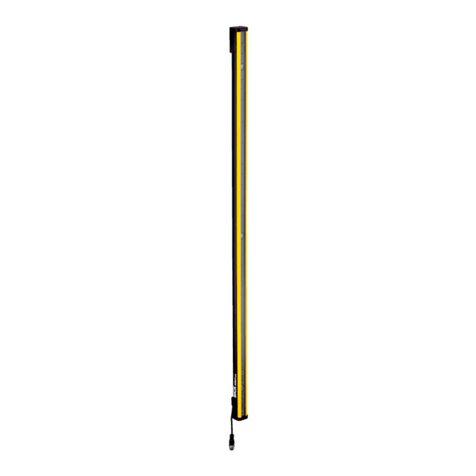
SICK
SICK deTem4 Core Ex User manual
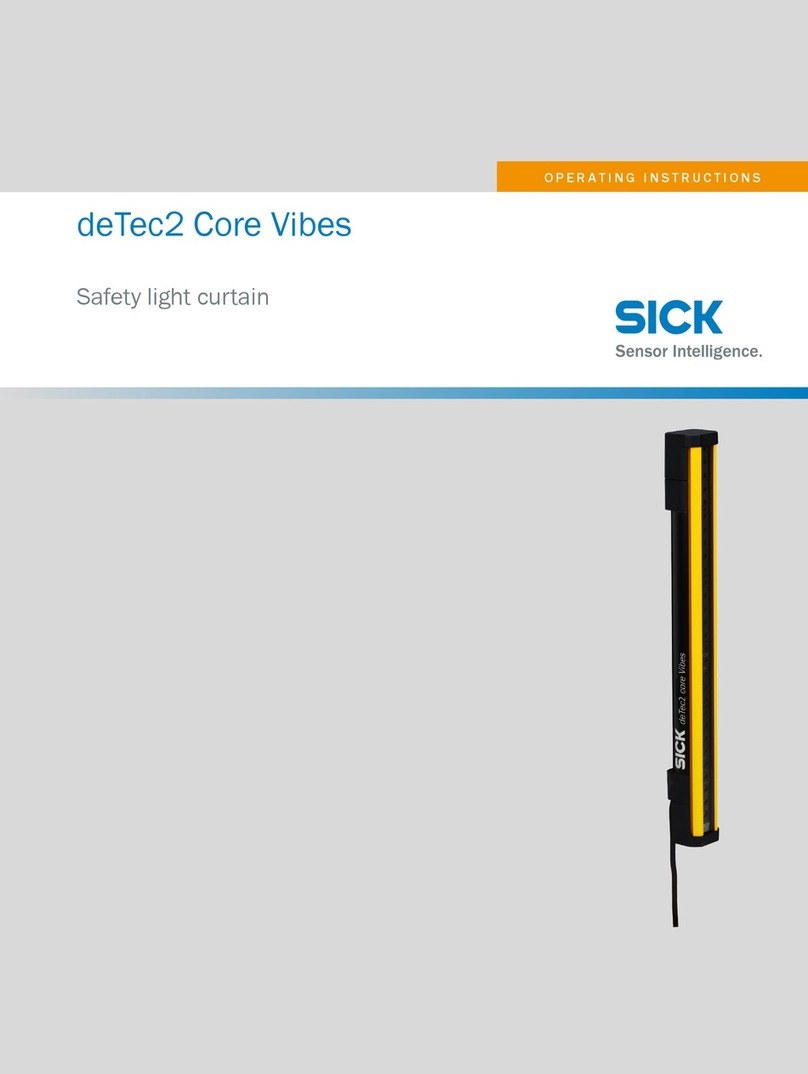
SICK
SICK deTec2 Core User manual

SICK
SICK C 4000 User manual
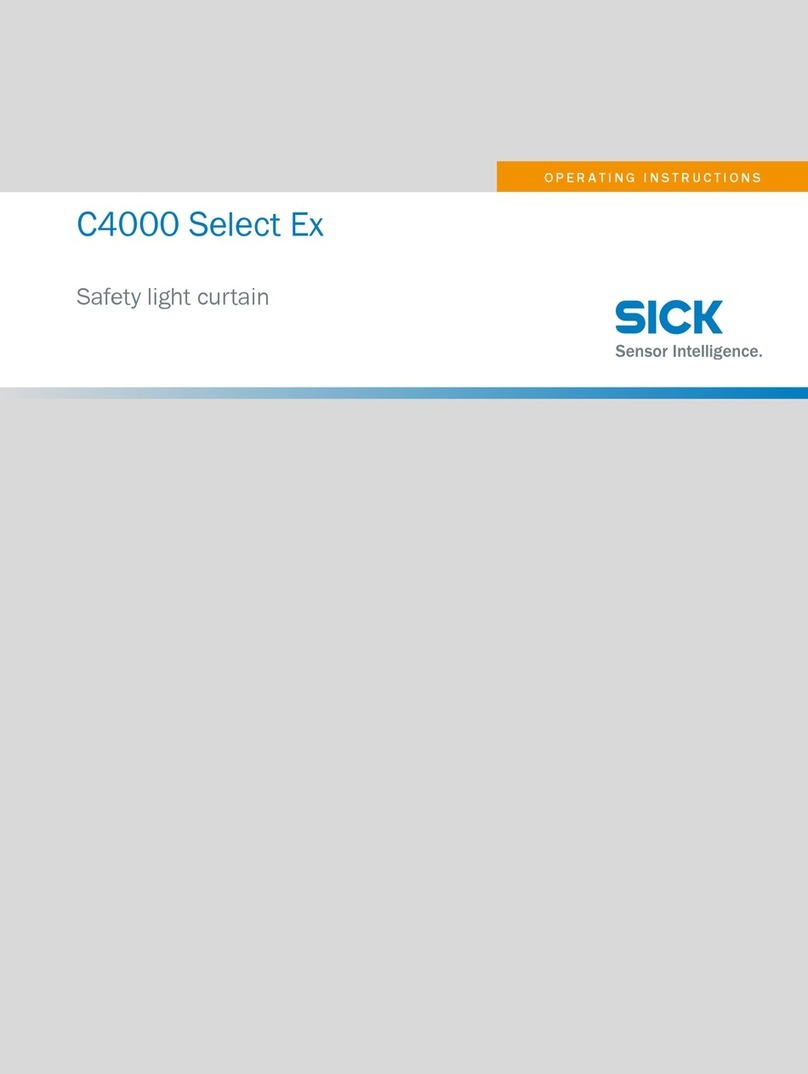
SICK
SICK C4000 Select User manual
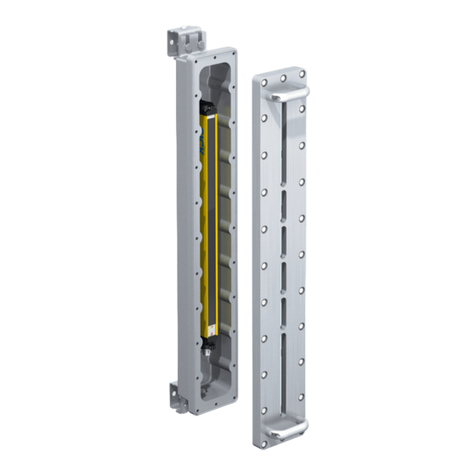
SICK
SICK C4000 Advanced Ex User manual

SICK
SICK C 4000 User manual
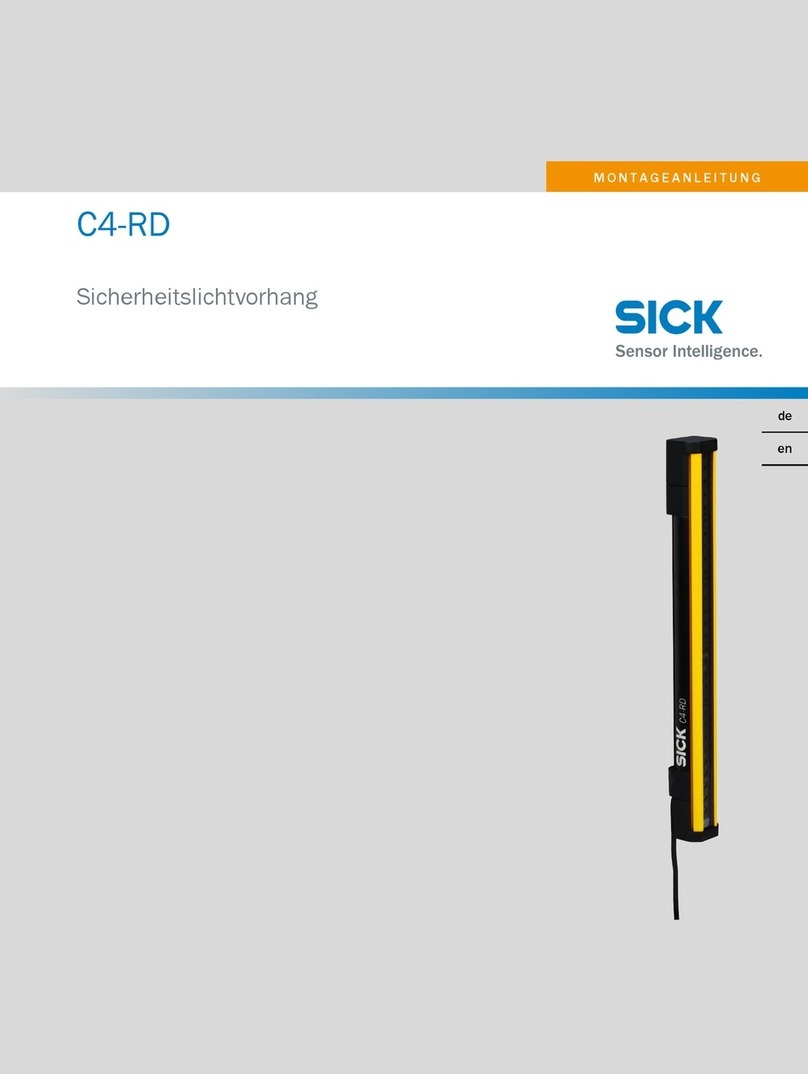
SICK
SICK C4-RD User manual

SICK
SICK C4-RD User manual
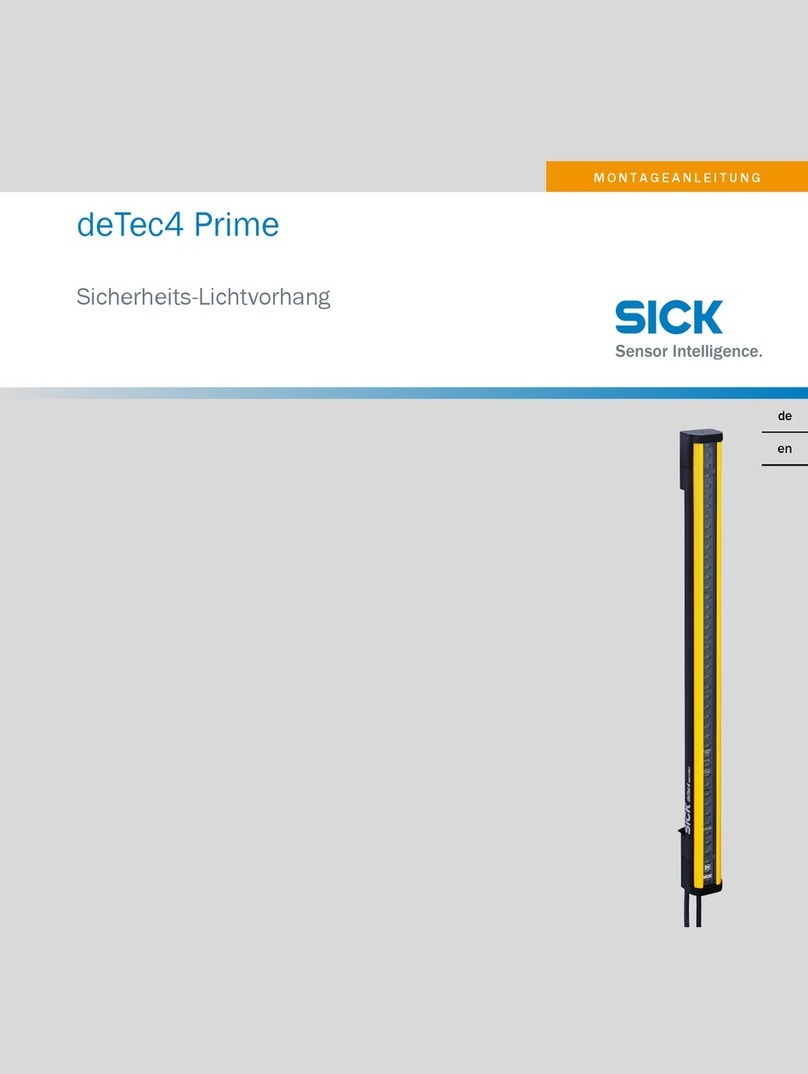
SICK
SICK deTec4 Core User manual
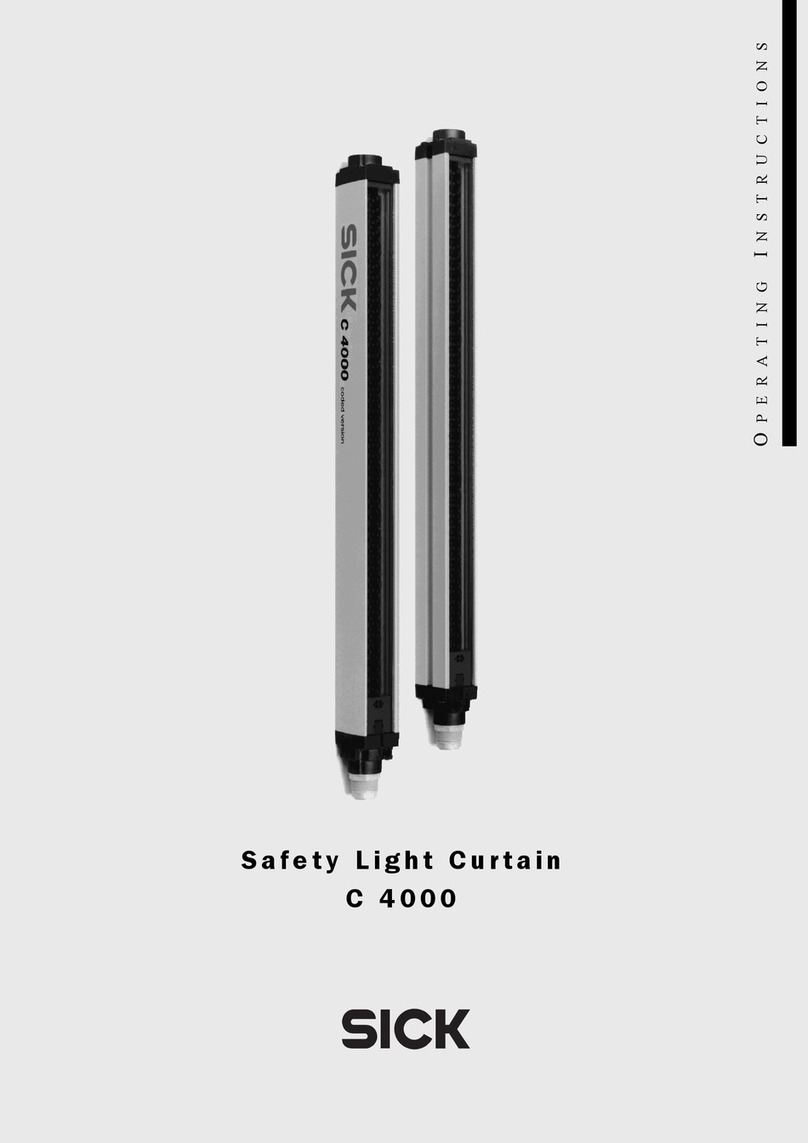
SICK
SICK C 4000 Series User manual
